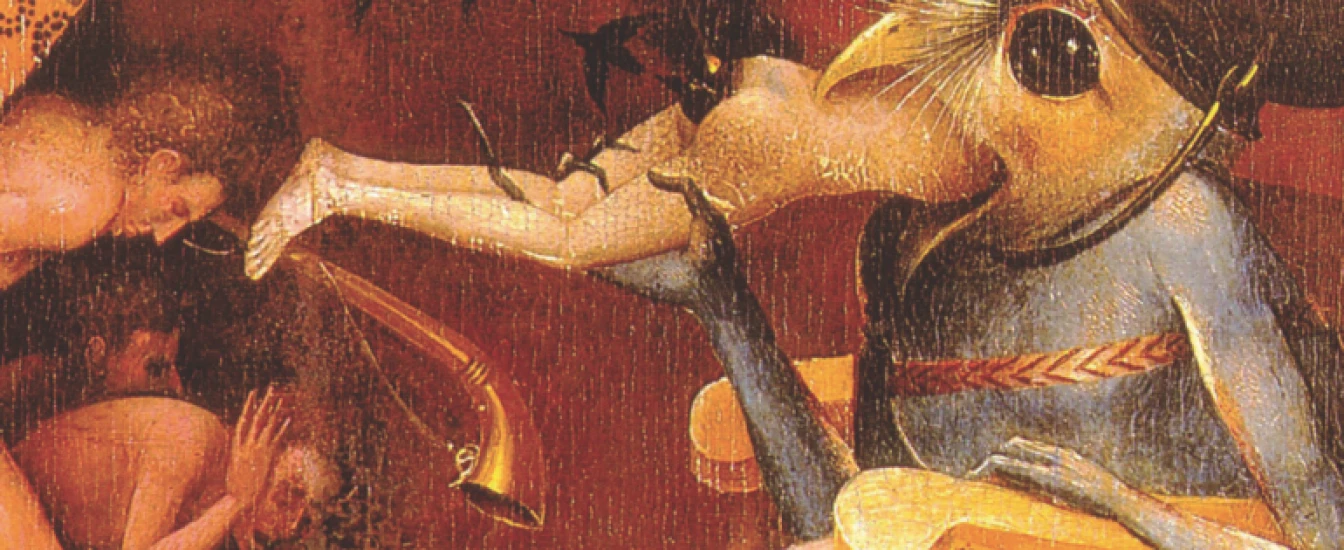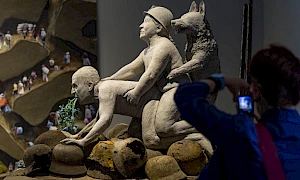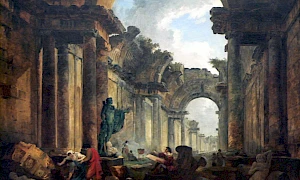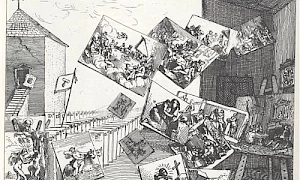On The Recent Events at MACBA

11 April 20151
[Preliminary remark: I was hired in 1999 as the Head of Public Programmes at MACBA, during Manuel Borja-Villel's tenure as Director. In 2009, I left the museum to return to my regular activity as artist, researcher and curator. I was one of the participating artists in the exhibition The Beast and the Sovereign, which triggered the current institutional crisis at MACBA that I address in this text. This remark clarifies my position as a "participant observer". This text was written two weeks after the MACBA crisis as a document of the events. It functions as a first interpretation for the international art community. Now, six weeks later, I would probably write it differently. It will probably require a second chapter in the near future, once a new director has arrived and different possible evolutions of the museum's situation start to take specific directions.]
This text offers a brief analysis of the recent events at MACBA provoked by the unintelligible decision of the current director Bartomeu Marí not to open the exhibition The Beast and the Sovereign. My point is that what is at stake here is beyond a matter of censorship. Whose are the responsibilities for this institutional crisis?
First, let me briefly summarise the events: the climax happened between 17 and 23 March, part of an ongoing process which will lead to the appointment of a new director and curatorial team in the next months.
The exhibition The Beast and the Sovereign was scheduled to open at MACBA on Wednesday 18 March. It was co-produced by MACBA and Württembergischer Kunstverein (WKV) Stuttgart and curated by Valentín Roma, Paul (born Beatriz) Preciado, Hans D. Christ and Iris Dressler. Roma and Preciado had been hired in January as MACBA's Chief Curator and Head of Public Programmes, respectively, after a period of about a year working as external "research directors". Christ and Dressler are co-Directors of WKV.
The exhibition took its title and concept from Derrida's last seminar in which the beast and the sovereign were articulated as the two allegorical extreme figures of politics, both beyond the law: the beast ignores the law and the sovereign has the power to suspend the law. This onto-theological division establishes a series of binary oppositions (class, gender, species, sexuality, race, health, etc.) that articulate the multiple structures of social domination. The invitation card included the following descriptive subtitle: 31 artists unmake power logics.
That there was internal trouble with the exhibition at MACBA became public knowledgewith the sudden cancellation of the press conference the day before the opening. Tuesday, the director had decided not to open the exhibition and this was made public in a short press release on Wednesday.
The reason given to the media for the cancellation by the director was his "disagreement with the curators" concerning the inclusion of a sculpture by Ines Doujak representing the former King of Spain, Juan Carlos I, being sodomised by Bolivian activist Domitila Barrios. According to the director, the curators had not informed him about the inclusion of that artwork until the very last minute, and they refused to remove it when he asked them to do so. The problem was a parodic presentation of Spanish monarchy that Marí considered "inappropriate" for MACBA. Why "inappropriate"? The director's arguments were obscure. Saying the artwork was "inappropriate" means nothing and was merely euphemistic. His decision lacked rationality. Public opinion understood the rationale was disguised and came from internal pressures derived from the composition of MACBA's ruling power, its board of trustees or consortium.
The consortium is constituted by three public bodies – the city, the Catalan regional governments, the Spanish State's Ministry of Culture (all of them now under right-wing rule) – and a private foundation, called MACBA Foundation. It just so happens that King Juan Carlos I's wife, the former Queen Sofía, is the Honorary President of the MACBA Foundation and its President, Leopoldo Rodés, is known as being a personal friend of the former King. Marí always declared he had not received any pressures for such cancellation from above and that it was his personal decision, but whether or not this is true, the repressive effect is the same: what is the difference between censorship and self-censorship? Obviously, the director's decision was determined one way or another by the impulse to prevent the current ruling oligarchy from public caricature.
Thursday and Friday, the local press followed the crisis and the general public opinion expressing deep concerns regarding Marí's censorship. The curators and the artists in the exhibition made public statements condemning the censorship. Local artists and art critics' organisations criticised the closing as an authoritarian attack on freedom of expression. The resignation of the director was requested. Public debates on the oligarchic and anti-democratic constitution of public art institutions started, and MACBA Foundation was pointed out as the hidden ruling power of the museum. That a private foundation could de facto rule the museum is in complete contradiction with the democratic mission of any public institution. Were public powers acting as guarantors of the public service?
On Friday, Doujak sent the press a reproduction of the loan form for the artwork, which included a small reproduction, signed by Marí and dated 25 February. This was proof that the director had seen the artwork before and thus blaming the curators for concealing it was unsustainable. More importantly, that same day, the museum workers made a public statement in which they refused the situation created by the cancellation and expressed their disagreement with MACBA's "ruling model", referring both to the museum's consortium structure and to its artistic direction. This was an unexpected contribution to the public debate, which pointed to a potential internal rebellion in the museum.
In a further turn of events on Friday evening, Marí changed his mind and decided to open the exhibition. He argued that the pressure from the public opinion and particularly the unexpected (in his view) lack of support from his own team determined his move backwards. He simultaneously declared that he was presenting his resignation to MACBA's consortium. The members of the consortium announced an emergency meeting on Monday afternoon in order to find a solution to the crisis.
The exhibition opened on Saturday morning. On Monday, the members of the consortium accepted the director's resignation. He had previously fired Roma and Preciado arguing a definitive break of professional confidence. The museum's head was cut. The only survivor of the former artistic direction is the Chief Executive Officer, Joan Abellà, who despite having also presented his resignation to the consortium, was confirmed in his position in order to run the public competition to hire a new director. Marí committed to remain in office for a few months until the new director's arrival.
Now, two weeks later, the situation is no less pacified, even though MACBA has disappeared from the press covers. The fact is that the museum needs Roma and Preciado's programming in order to remain open and active. But the dialogue between them and Marí and Abellà is extremely rarified, if not impossible.
How can these events be read and how can the probable detrimental consequences for the museum be prevented?
The recent events are the culmination of a series of internal dysfunctions. Including Roma and Preciado, up to seven curators have been fired or left the museum in the last five years. When Roma and Preciado where first hired as temporary external research advisors, they were given the responsibility for what was supposed to be the director's duty, that is to define and execute an academic and artistic programme. By externalising the intellectual leadership, the museum emptied the director's actual role and made it merely representative. This has been an undeclared but known and accepted truth: MACBA's director was missing.
So, even if the responsibility of the recent events is clearly Marí's, the consortium is co-responsible for supporting this situation during all these years. Obvious interpretations for this support are that, as a consequence, the director did not interfere with the actual rule of the consortium. Also that he offered no resistance to the systematic funding cuts the museum has suffered in the last five years, as part of the general cuts in public funding in Spanish administrations and public institutions. But, most importantly, it reveals the consortium's understanding of the museum's intellectual role as irrelevant.
From this perspective, the current deterioration of MACBA's status seems the best legitimation for a desired regressive shift in its institutional direction.
Let's not forget that over the past decade, and under Manuel Borja-Villel's direction, MACBA became a paradigmatic contemporary art institution worldwide. The museum offered a solid local-but-not-localist counter-narrative of modernism from the vantage point of the historically peripheral condition of Barcelona. Besides, the museum experimented successful methods of artistic research and collaboration with social movements like no other museum did. MACBA provided a model for what an experimental and radically democratic institution could be. This model was a viable alternative to current cultural policies oriented towards mass tourism, real estate and banality in a context of post-industrial neoliberal shift in urban economies.
Marí was Borja's Chief Curator and thus he contributed to MACBA's successful model. In 2008, he received a precious but extremely demanding legacy. Too much of a burden for anybody? Seven years later, the legacy is wasted. Will the museum recuperate from its ruins?
What about the co-responsibility implicit in the museum's organisational structure?
The public-private composition of the consortium is characteristic of the neoliberal shift in local cultural policies in Barcelona at the time of the 1992 Olympic Games, which was the context of MACBA's origin. The nomination of this city as an Olympic site in 1986 was the catalyst for the move towards a post-industrial "cultural economy". The public-private fix was a prototype for a city which apparently lacked strong public funding. It was probably also an experiment for potential future cultural institutions, as a modest replica of the American type of institutions based on the private economy of the financial elites. Even though such a model is not good or bad per se, but rather a solution for a specific situation, the recent events indicate that problems occur when public institutions behave like private ones. Private and oligarchic interests cannot determine the direction of any public institution. In order to prevent this, a representative democratic museum structure should also include social agents other than the financial elites in order to guarantee and protect the necessary autonomy of the institution and public interest. The future democratic reinvention of MACBA will have to involve new participation of civil society and social movements in the board of trustees.
But the current ruling powers in the city and the museum don't allow too much optimism in terms of a radicalisation of democracy to come. Both the city and the region are currently ruled by the right-wing Catalan nationalist party Convergència i Unió (CiU). Characterised by strongly identitarian, parochial, petty-capitalist neoliberal business oriented mentalities, the current cultural officers have declared their skepticism with the MACBA model and its programme, as being too elitist, intellectual and not focused enough on the local scene. It is significant that the only survivor of the current MACBA decapitation, Executive Officer Joan Abellà, is the Vice-President of Òmnium Cultural, a cultural CiU think-tank that provides instrumental support to the current government's nationalist neo-conservative agenda. His continuity in the midst of this crisis is proof of the self-reproduction of the ruling elites. The main problem with such elites is not that they are conservative or even reactionary, but that they are anti-intellectual technocrats: they constitute a force of acculturation. If this is the force that will lead the future, it is easy to predict that from the ruins of MACBA, a different kind of museum will emerge which will no longer be the experimental and radical institution it has been.
Who will offer a significant and productive resistance? And how? Local elections on 24 May could bring a change in the ruling political majorities and maybe end CiU's rule thus opening up a new scenario. But my impression is that only internal resistance from the museum professionals that contributes to a mobilisation of other social agents (and that recognises and guarantees their participation in future decisions) may bring hope for an alternative to the otherwise predictable regressive shift. The best of MACBA's history lies precisely in its capacity to engage with social forces "from below". Will the intelligence of the museum workers and cultural professionals overcome the self-reproduction of the (a)cultural elites?



